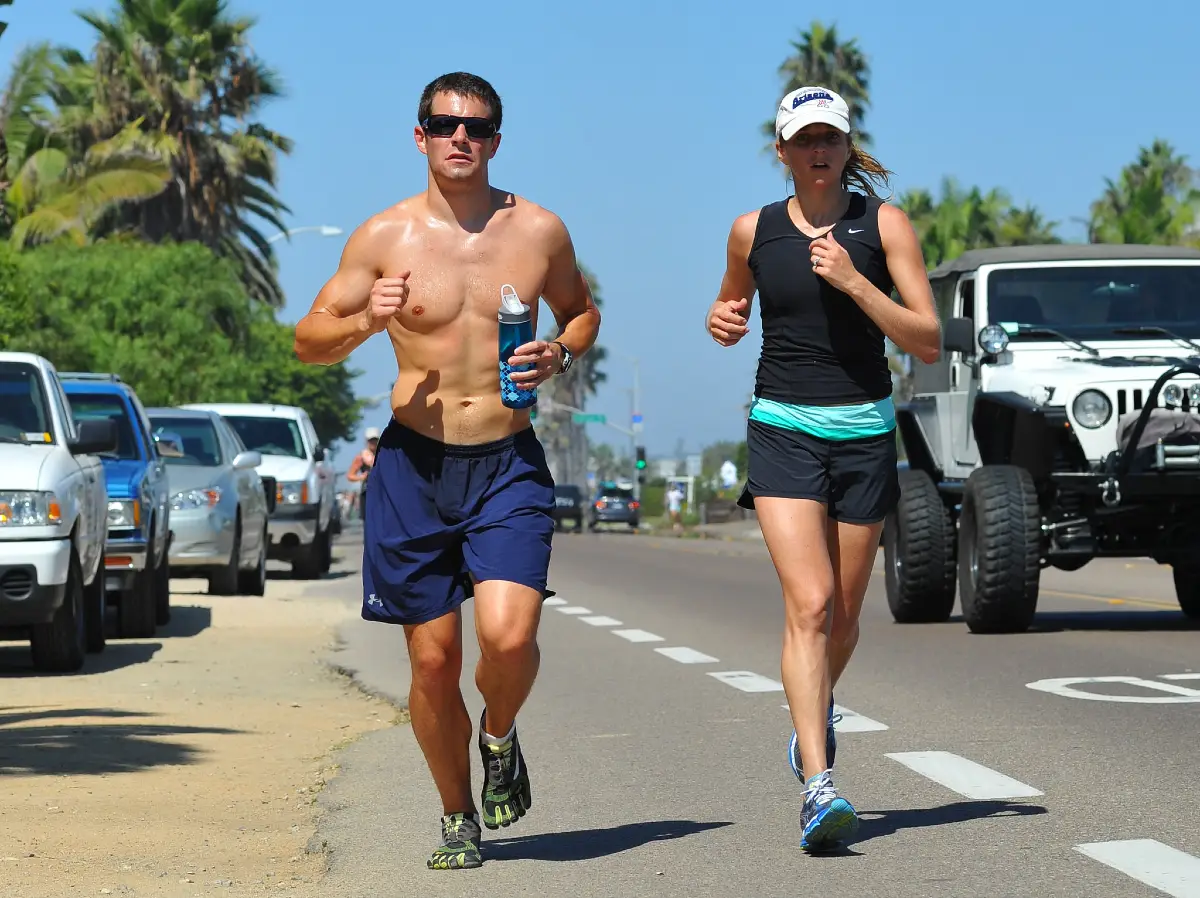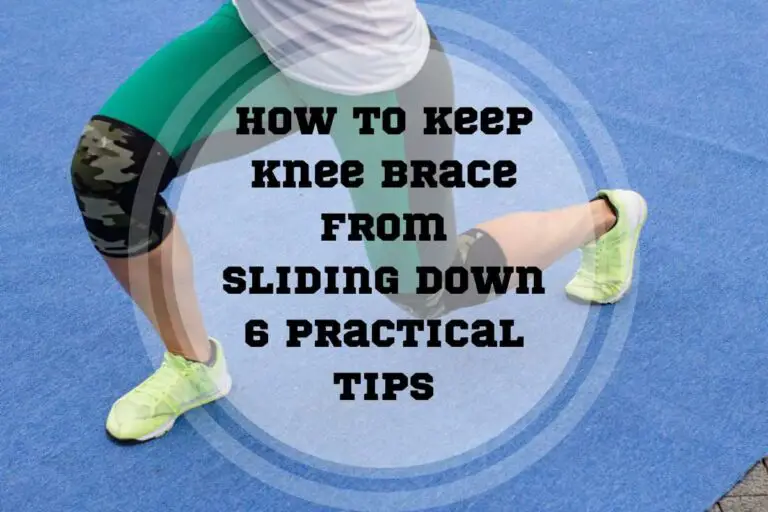Running in 100-Degree Weather: 3 Benefits + 5 Precautions
Are you a runner looking to beat the scorching summer heat and stay safe while doing so? Running in 100-degree weather can be risky if not done with the right precautions.
It’s time to equip yourself with the knowledge needed for successful summer running. So what are you waiting for? Let’s discuss everything about running comfortably and safely under high temperatures!
Should you Run In 100-Degree Weather?
Even though there are some benefits of running in the heat, it can be quite dangerous for your health. However, there are some tips that can make it easier, from pre-cooling techniques, managing chafing during runs, and wearing minimal cooling clothing to staying hydrated throughout.
Running in the Heat
Running in the heat poses unique challenges. When it is warm outside, your body needs to work harder to cool itself by sweating and increasing respiration rate, which can lead to increased exertion and fatigue.
It is important for runners of all levels to take the necessary steps before starting a hot-weather run. Acclimatization usually takes around 8-14 days, as the body needs time to adjust properly, making sure it can handle longer runs in hotter temperatures.
How Hot Is Too Hot to Run in Summer?
When it comes to running in the summer, the temperature matters. So, when is it too hot to run outside? As temperatures increase, especially when the humidity is over 70-80%, it becomes difficult to regulate body temperature, which can lead to dehydration and other heat-related illnesses.
Generally speaking, when running outdoors, if the humidity and/or temperature are above 84°F (29°C), then it may be too hot for extreme activity levels. And what about days when it is 90 degrees, you might ask? Temperatures from 86-97°F (30-36˚C) should still allow you to do some light jogging, as long as you stay mindful of your performance decline.
3 Benefits of Running in the Heat
Running in hot weather can provide some health benefits. Let’s learn more about the advantages of running in warm conditions.
1. Improved Heat Tolerance and Endurance
One of the main benefits associated with running in high temperatures is improved heat tolerance and endurance. Heat acclimation can help to increase your cardiovascular fitness, improve performance, reduce fatigue, and make you more comfortable when exercising in hot weather.
When running in high temperatures, our bodies adapt to the environment through physiological responses such as increased sweating rate for cooling purposes. This helps the body learn how to efficiently manage its internal temperature while still providing energy to fuel activity.
2. Increased Cardiovascular Fitness
Running in hot weather puts stress on the cardiovascular system, which can lead to improved cardiovascular fitness. This extra strain on the heart increases cardiac output and plasma volume, allowing it to pump more blood with each beat.
3. Enhanced Sweat Response and Cooling Mechanisms
When you spend time running in the heat, your body’s sweating rate improves. Increased gland activity helps preserve core body temperature, as sweat evaporates off the skin and enables coolingness. Additionally, when running in higher temperatures there is an increase of blood flow near the skin, which improves cooling through increased evaporation rates.

6 Disadvantages and Dangers of Running in the Heat
Running in extreme temperatures can cause heat-related illnesses, including heat exhaustion and heatstroke, as well as increased discomfort and fatigue.
1. Increased Discomfort
Running in 100-degree weather poses a host of physical and mental challenges for runners, as the intense heat puts great strain on both the body and mind. Physically speaking, an increase in temperature causes our bodies to work harder, with an elevated heart rate and increased sweat production as we attempt to regulate our internal temperature.
2. Risk of Heat Exhaustion
Running in extreme heat increases the chances of developing an array of serious health issues, including severe forms of heat exhaustion and heatstroke. Heat exhaustion is a condition that causes your body to become unable to cool itself after extended periods in hot weather, or from overexertion.
The most common signs and symptoms include dehydration, headache, nausea, dizziness, weakness, and fatigue. All of these are caused by high temperatures and elevated humidity levels, combined with physical activity.
3. Higher Chance of Dehydration
Running in 100-degree weather leads to an increased risk of dehydration, as the body is working harder to keep cool. Sweating can lead to a loss of fluid and electrolytes, which can result in heat stroke and other issues if not restored.
4. Heat-Related Illnesses
Heat-related illnesses, such as heat rash, heat cramps, heat exhaustion, and heat stroke, can affect individuals during hot weather. High temperatures combined with high humidity increase these risks.
Symptoms of heat-related illnesses include warm dry skin, a high fever, rapid heart rate, and possible loss of appetite, nausea, and even vomiting.
5. Slower Pace
When running in 100-degree weather, you should expect your speed to be compromised. Heat causes an increased oxygen demand, as some of the body’s blood flow is redirected to the skin for cooling.
The body needs more energy to regulate its temperature and maintain performance levels when running in hot conditions, leading to a decrease in pace. Additionally, high temperatures cause exhaustion and fatigue faster than usual, meaning that your endurance is also compromised.
6. Greater Fatigue
Running in hot and humid weather can lead to greater fatigue due to the stress that is put on the body. The combination of extreme heat and intense physical activity causes an increase in metabolic heat production, which requires more energy output.
This extra exertion increases heart rate, which makes your muscles work harder just to pump blood throughout your body, leading to fatigue faster than usual. Heat also affects how quickly you absorb oxygen from each breath, meaning that even a regular level of effort will require more airflow and therefore be harder for your lungs and circulatory system.

5 Tips How to Prepare for Running in 100-Degree Weather
With all of these challenges, how can you run in 100-degree weather? Read on to learn a few tips and tricks.
1. Pre-Cooling Techniques
Pre-cooling is a technique used to lower a runner’s core body temperature before starting to run in hot weather. It helps extend the amount of time a runner can perform without experiencing heat-related fatigue.
There are various pre-cooling methods that runners can use, such as chowing down on a slushie or cold water immersion. Carrying a frozen washcloth while running also helps beat the heat and stay safe.
2. Stay Hydrated
Staying hydrated is key to safely and effectively running in hot weather, especially when temperatures reach 100 degrees. Hydrating before your run helps ensure that you start the run well-hydrated. It is also important to plan how you’ll continue to replenish fluid throughout the run.
You should drink about 5-10 oz of water every 15-20 minutes while running, but you want to avoid overhydration, which can have a negative effect on performance and health. Sodium or electrolyte drinks help with proper hydration, as they contain essential minerals that need to be replenished during long runs in the heat.
Additionally, it’s important to maintain a post-run recovery routine with adequate water intake so that your body stays properly hydrated, even after the exercise stops.
3. Adjust Your Time, Pace, and Expectations
Consider running at a slower speed, as this will help you conserve energy and prevent overheating. If possible, aim to exercise earlier in the morning or later in the evening, when temperatures are cooler.
Finally, consider running on trails, which offer shade, or use an air-conditioned treadmill. These can be safer alternatives than running in extreme heat.
4. Wear Appropriate Clothing
Light-colored and breathable clothes can help reduce the amount of heat absorbed by your body, as opposed to darker-colored fabrics, which absorb more heat from the sun.
Moreover, wearing loose garments allows air to circulate around you for better cooling and ventilation while exercising in high temperatures.

Pro Tip:
Although it may be tempting to opt for tight and form-fitting clothing, this restricts your body’s ability to cool itself effectively, making it more difficult and uncomfortable to physically perform outdoors during extremely hot days.
5. Take Breaks and Seek Shade
As temperatures rise above 85 degrees, running can become extremely uncomfortable if you don’t take breaks or find some respite from the sun’s direct rays in shaded areas. For those who choose to run during the hotter parts of the day, planning ahead and managing exposure to sunlight while on your run is important.

Pro Tip:
Consider mapping out routes with plenty of shade options, such as parks or tree-lined streets. An early morning start could also help beat the midday heat surge.
Frequently Asked Questions About Running in 100-Degree Weather
Is it better to run in the cold or heat?
Both can provide benefits, but they each come with their own risks. When running in bad weather when it is very hot, you need to take care not to suffer from dehydration or other heat-related issues. Running in cold conditions can lead to increased discomfort, such as shivering and reduced performance, due to the extra energy needed for staying warm.
Is it safe to run in 100-degree weather?
Running in temperatures above 95 degrees may put runners at risk for heat-related illnesses like heat stroke, heat exhaustion, and dehydration. It is important to take all the necessary precautions and safety measures when running in such extreme weather conditions.
Final Thoughts on Running in 100-Degree Weather
Running in 100-degree weather can be both rewarding and potentially dangerous. You need to prepare for such running by pre-cooling, staying hydrated, wearing suitable clothing, and taking necessary breaks during the run.
Runs carried out under extreme temperatures don’t have to be daunting, but should always be undertaken with caution. Before your run, evaluate if it’s really an ideal day for a workout outdoors.
Do you run in 100-degree weather? Please tell us about your experience in the comments below.
Also read:
- 30 Minute Run Workout
- Benefits of Hill Sprints
- How Cold Is Too Cold to Run
- 30 Minute Run Workout
- Numb Toes When Running
- Average 200 Meter Time
- Coffee After Running
- Running With Sore Legs
- Best Beach Running Shoes
References:
- Consensus recommendations on training and competing in the heat // BJSM: https://bjsm.bmj.com/content/49/18/1164
- Heat-Related Illnesses in Children and Teens (Heat Cramps, Heat Exhaustion, Heat Stroke) // URMC: https://www.urmc.rochester.edu/encyclopedia/content.aspx?ContentTypeID=90&ContentID=P01611
- Run Safe in Hot Weather // RRCA: https://www.rrca.org/education/for-runners/hot-weather-running/
- Consensus recommendations on training and competing in the heat // PMC: https://www.ncbi.nlm.nih.gov/pmc/articles/PMC4602249/
- Exercise under heat stress: thermoregulation, hydration, performance implications, and mitigation strategies // American Physiological Society Journal: https://journals.physiology.org/doi/full/10.1152/physrev.00038.2020
If you have any questions or suggestions, you can contact us via email – [email protected]







Thanks, quite nice post.